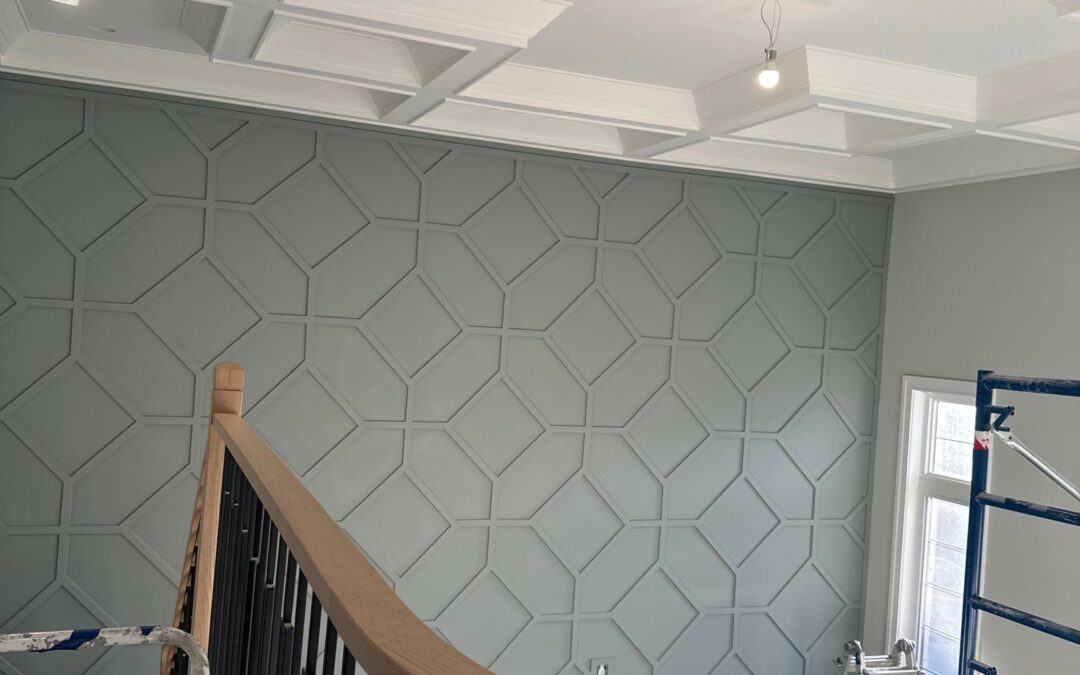A flawless wall finish isn’t magic—it’s the result of skill, patience, and precision. When homeowners choose a professional Interior Painting Service, they’re often amazed at how smooth and seamless the results look compared to DIY efforts. Professionals don’t rely on shortcuts; instead, they follow a meticulous process that blends preparation, quality tools, and tried-and-tested painting techniques.
This approach ensures walls look smooth from every angle, the paint lasts longer, and the finish elevates the overall feel of a space. Here’s an in-depth look at how the pros make it happen.
Precision Preparation – The Foundation of a Smooth Finish
Professionals know that the painting process starts well before the first coat of paint is applied. Proper preparation can make or break the outcome. Even the most expensive paint won’t look right if applied over dust, dents, or uneven surfaces.
Surface Inspection and Repair
Before painting begins, experts carefully inspect every wall and ceiling. They identify imperfections such as:
- Hairline cracks
- Nail pops
- Flaking old paint
- Water stains
- Uneven textures
Once identified, repairs are made using fillers or joint compounds, followed by sanding to create a perfectly flat surface.
Cleaning and Degreasing
Walls—especially in kitchens and bathrooms—can hold onto grease, dust, and residue. Professionals wash the surfaces using mild detergents to ensure paint adheres evenly.
Protecting Surroundings
Pros use painter’s tape with precision, ensuring sharp edges where walls meet trim or ceilings. They also cover floors, furniture, and fixtures to avoid accidental splatters.
Selecting the Right Materials and Tools
The finish is only as good as the tools and materials used. Professional painters know when to use a roller, brush, or sprayer for each section, and they select paints designed for durability and coverage.
Key considerations when choosing materials:
- Paint Quality: High-grade paints offer better pigmentation, coverage, and longevity.
- Finish Selection: Matte for subtle elegance, eggshell for easy cleaning, satin for a soft glow, and semi-gloss for high-traffic or moisture-prone areas.
- Brush and Roller Type: Synthetic bristles for latex paints, natural bristles for oil-based paints, and nap sizes matched to the surface texture.
Professionals also keep their tools clean and in excellent condition to avoid streaks or shedding bristles.
The Priming Process – Essential for Lasting Color
Priming is often skipped in DIY projects, but experts treat it as a non-negotiable step, especially when:
- Covering dark or bold colors
- Painting over new drywall
- Sealing stains or watermarks
- Transitioning from oil-based to latex paints
A quality primer ensures:
- Even absorption of paint
- Consistent color
- Better adhesion
- Longer-lasting results
Mastering Paint Application Techniques
The way paint is applied dramatically affects the final appearance. Professionals use consistent, controlled strokes and know how to maintain a wet edge to avoid visible lines.
The Three-Step Coating Process
- Cutting In: Using an angled brush, painters carefully outline edges and corners before rolling larger sections.
- Rolling: Pros use a steady, uniform pressure, rolling in overlapping “W” or “M” shapes for even coverage.
- Final Touch-Ups: After drying, small imperfections are addressed with precision brushes for a seamless look.
Controlling Environmental Conditions
Professional painters know that temperature, humidity, and airflow can influence the drying process. Painting in overly humid or hot conditions can cause issues like blistering or slow drying.
They often:
- Work in controlled indoor conditions
- Use fans or dehumidifiers when necessary
- Allow proper curing time between coats
Attention to Detail at Every Stage
What separates a professional finish from an average one is the meticulous attention given to every stage of the process. This means:
- Checking for drips or roller marks while the paint is still wet
- Ensuring even sheen and color consistency
- Maintaining straight, sharp edges without paint bleed
Cleaning and Final Inspection
After the paint dries, professionals perform a thorough walkthrough, checking every wall under different lighting conditions. Touch-ups are made immediately, ensuring a flawless look from every perspective.
They also clean the space meticulously—removing tape, putting furniture back, and ensuring the home is ready to enjoy without leftover mess.
Common Mistakes Professionals Avoid
To achieve a flawless finish, pros are careful to avoid:
- Overloading brushes or rollers
- Skipping surface preparation
- Applying paint too thickly
- Ignoring primer when needed
- Painting over damp or dusty surfaces
The Role of Patience and Layering
Instead of trying to achieve perfect coverage in one pass, professionals work in thin, even coats. Each coat is allowed to dry fully before the next is applied, creating depth, richness, and durability in the finish.
Why Choose Fitch Painting?
At Fitch Painting, we believe flawless interior painting is a blend of craftsmanship, precision, and pride in every detail. Our process is built on:
- Detailed Preparation: We ensure walls are smooth, clean, and ready for paint.
- Premium Materials: We choose paints and tools that deliver the best finish and durability.
- Skilled Application: Our team applies each coat with precision for even coverage and perfect edges.
- Respect for Your Space: We protect your home and leave it spotless after every project.
When you want your walls to look their best, with rich, lasting color and a professional touch that shows in every corner, Fitch Painting is the trusted choice.

